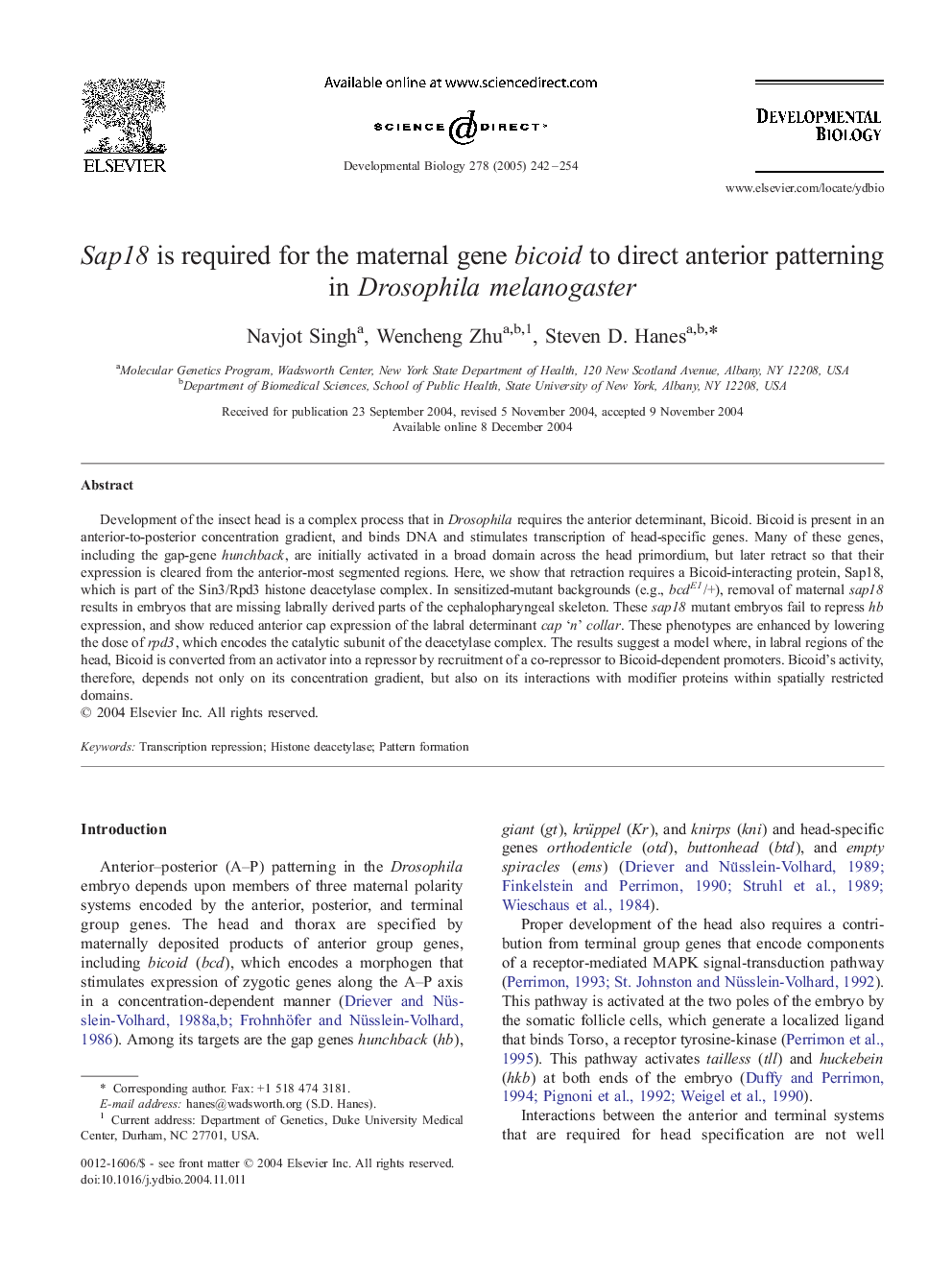| Article ID | Journal | Published Year | Pages | File Type |
|---|---|---|---|---|
| 10934446 | Developmental Biology | 2005 | 13 Pages |
Abstract
Development of the insect head is a complex process that in Drosophila requires the anterior determinant, Bicoid. Bicoid is present in an anterior-to-posterior concentration gradient, and binds DNA and stimulates transcription of head-specific genes. Many of these genes, including the gap-gene hunchback, are initially activated in a broad domain across the head primordium, but later retract so that their expression is cleared from the anterior-most segmented regions. Here, we show that retraction requires a Bicoid-interacting protein, Sap18, which is part of the Sin3/Rpd3 histone deacetylase complex. In sensitized-mutant backgrounds (e.g., bcdE1/+), removal of maternal sap18 results in embryos that are missing labrally derived parts of the cephalopharyngeal skeleton. These sap18 mutant embryos fail to repress hb expression, and show reduced anterior cap expression of the labral determinant cap 'n' collar. These phenotypes are enhanced by lowering the dose of rpd3, which encodes the catalytic subunit of the deacetylase complex. The results suggest a model where, in labral regions of the head, Bicoid is converted from an activator into a repressor by recruitment of a co-repressor to Bicoid-dependent promoters. Bicoid's activity, therefore, depends not only on its concentration gradient, but also on its interactions with modifier proteins within spatially restricted domains.
Related Topics
Life Sciences
Biochemistry, Genetics and Molecular Biology
Cell Biology
Authors
Navjot Singh, Wencheng Zhu, Steven D. Hanes,
